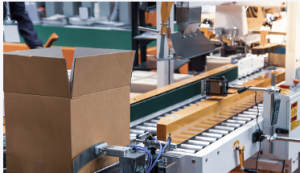RFID tags are small, conductive devices that can be attached to objects to provide an automatic identification process. These small devices consist of a transmitter and a radio receiver. The transmitter uses electromagnetic fields to transmit the tags’ information, while the receiver detects the signals and stores them in its memory.
 Active vs passive
Active vs passive
When choosing the right RFID tags, there are several things to consider. For example, there are passive and active tags, each of which has advantages and disadvantages. You also have to consider the various frequencies available for each tag type.
Active tags are more expensive and larger than passive ones. However, they can track valuable assets across a large area. They are also useful for companies that want to make real-time location systems.
Passive RFID tags are cheaper and less complicated. These tags only send signals when they are within range of an RFID reader. In addition, they can withstand dust and debris. They can deter theft and are often used in smart access cards.
Semi-passive RFID tags are battery-operated and work similarly to passive tags. This type of tag has a microchip and antenna. The microchip transmits data to the reader via radio waves.
Passive RFID is ideal for small businesses, as it is cheap and has a relatively long operational life. It is also suitable for inventory management and supply chain management.
However, it’s important to consider your needs. If you need a tag for long-term use or to track items over a wide range of locations, you should choose active RFID. On the other hand, if you only need a tag to track a single item or a key card, you may be better off with a passive one.
RFID is becoming increasingly popular as companies recognise its importance in tracking assets and digitising processes. Food processors, for example, are working with CFDR on testing readers and tags.
While there are several factors to consider when selecting the right RFID tag, choosing a tag that is suitable for your business’s needs is the best first step. An experienced vendor can help you to evaluate the different options. There are also newer smartphones that feature near-field communication.
Both active and passive RFID are powerful and efficient tools for managing production and inventory. However, each type is suitable for different applications.
Item level tagging in retail stores
In the retail industry, item-level tagging is one of the most rapidly growing technologies. It allows retailers to track individual items and their associated information in real-time. The benefits of this technology include the following:
Increased customer service and improved inventory accuracy. The technology can also help retailers to increase product availability, reduce shrinkage, and eliminate spoilage.
Item-level tagging is used in all industries, including food, military, and consumer electronics. However, the retail industry is one of the most aggressive adopters of this technology. Major retailers are implementing item-level tagging in their apparel, footwear, and footwear.
Item level tagging uses RFID tags to locate individual items on a store floor. These RFID tags enable retailers to determine the visibility of products and their availability at any given moment. This technology is being applied in several pilot programs to achieve significant sales lifts, in-stock improvements, and efficiency gains.
While item-level tagging can be a great solution for increasing inventory accuracy, companies face several challenges. One major issue is the cost of tags. Fortunately, tags and hardware are becoming more affordable.
Nevertheless, it is important to assess whether item-level tagging is the right approach for your organisation. If you choose to implement it, it is important to understand its strengths and limitations.
An important benefit of item level tagging is that it can reduce the time a salesperson spends searching for products in a stock room. Salespeople can then focus on customer service instead.
Item-level tagging can also be used on automated assembly lines. It can even be implemented on the front end of a retail store, giving customers a better experience.
Although item level tagging isn’t an exact science, it is worth considering. It can complement other technologies, such as AutoID. It can increase customer satisfaction, provide better inventory visibility, and streamline customer relationship management. There are a variety of other applications for RFID, so it’s a good idea to research it to see what works best for you.
RFID-enabled drones reduce health and safety
One of the most significant issues is the inability to read the RFID tag from a distance. A drone can’t read the tag from the ground. A stationary reader can read the tag but only at specific locations.
Scientists believe drones with RFID tags will help reduce inventory and safety issues. Moreover, they envision using the system in a warehouse environment, where the items are placed on high shelves.
Researchers have outlined a research agenda that includes three areas for further research. One area of interest involves drones scanning and locating equipment at large construction sites. Another area is the integration of drones in the disaster response process.
Several studies have examined the use of drones in the humanitarian sector. Although the research is in its infancy, scientists believe this technology can help the environment and support hard-to-reach marginalised groups.